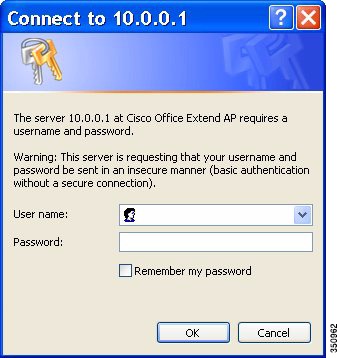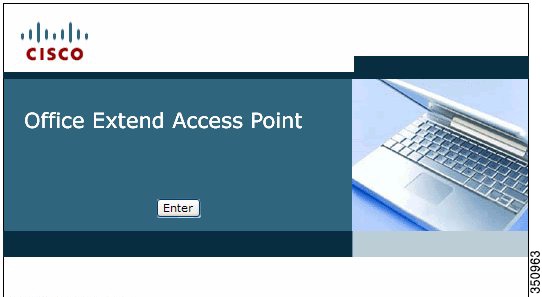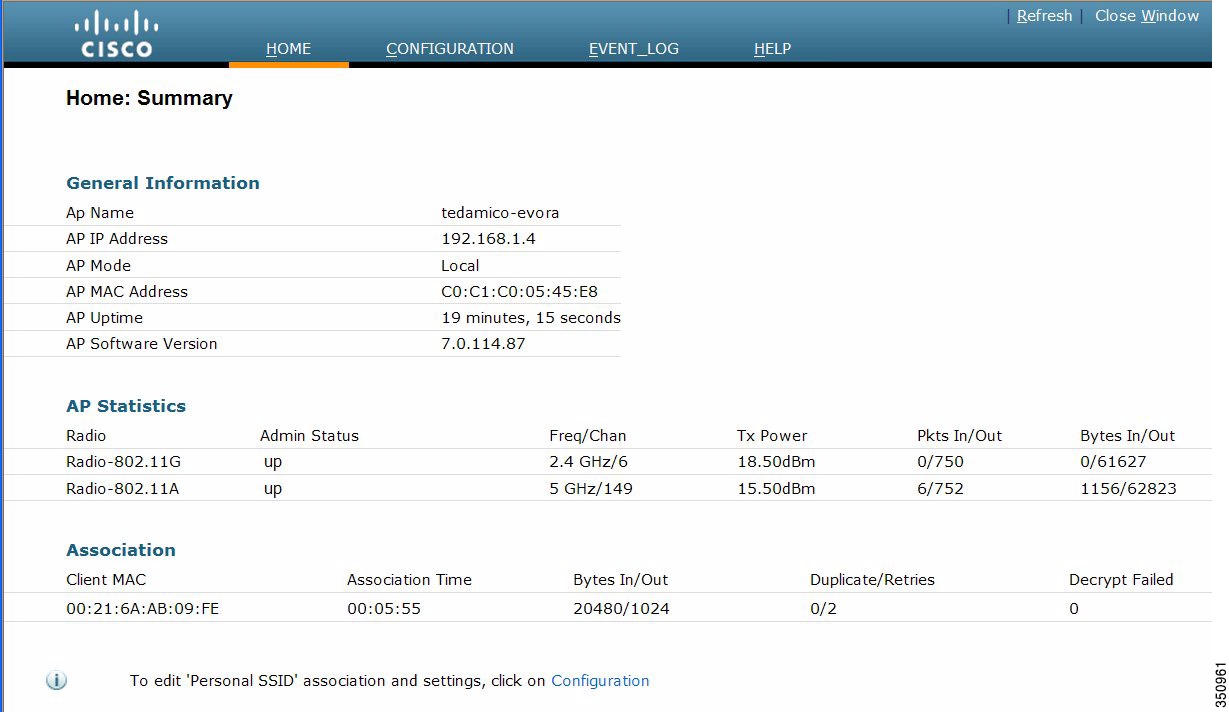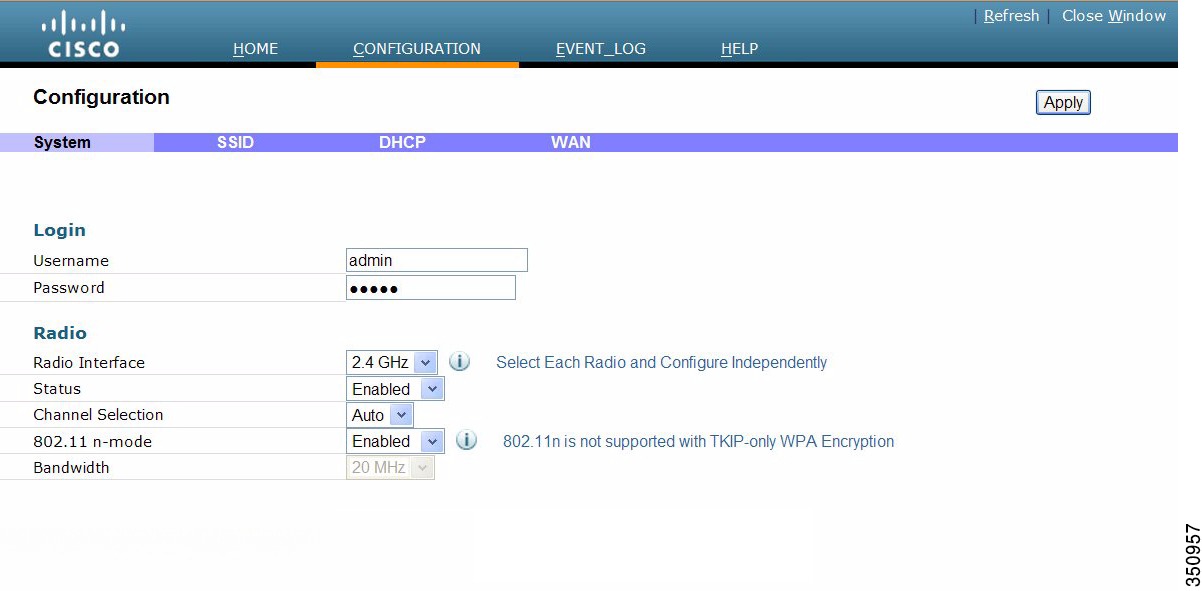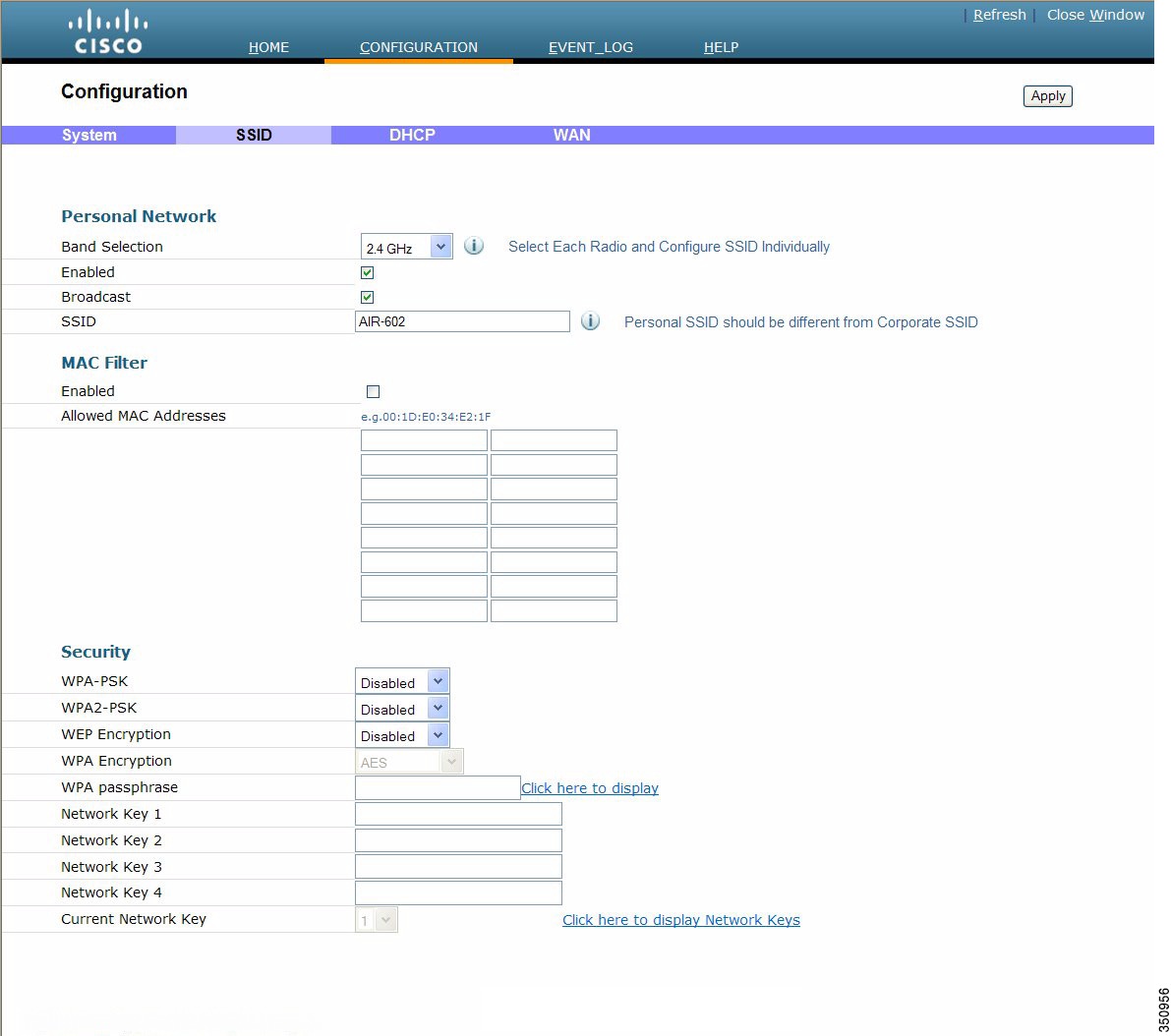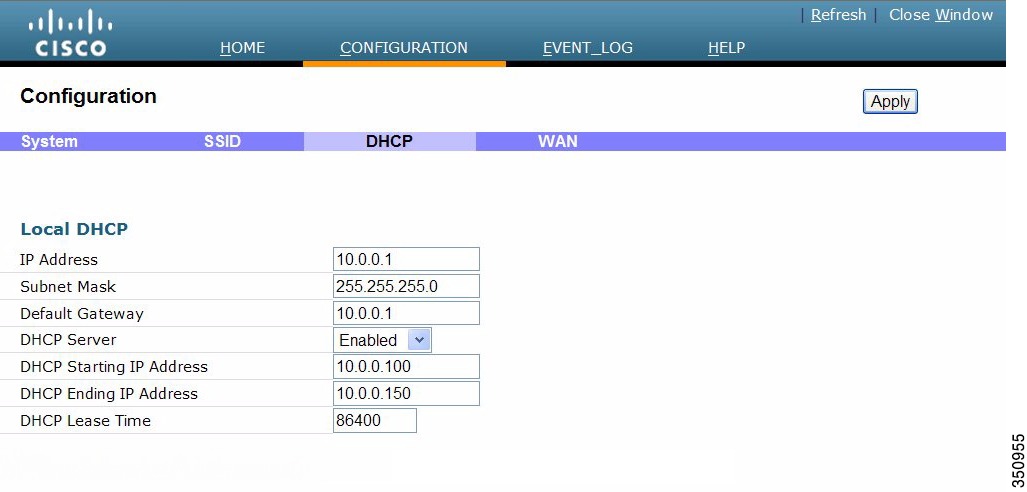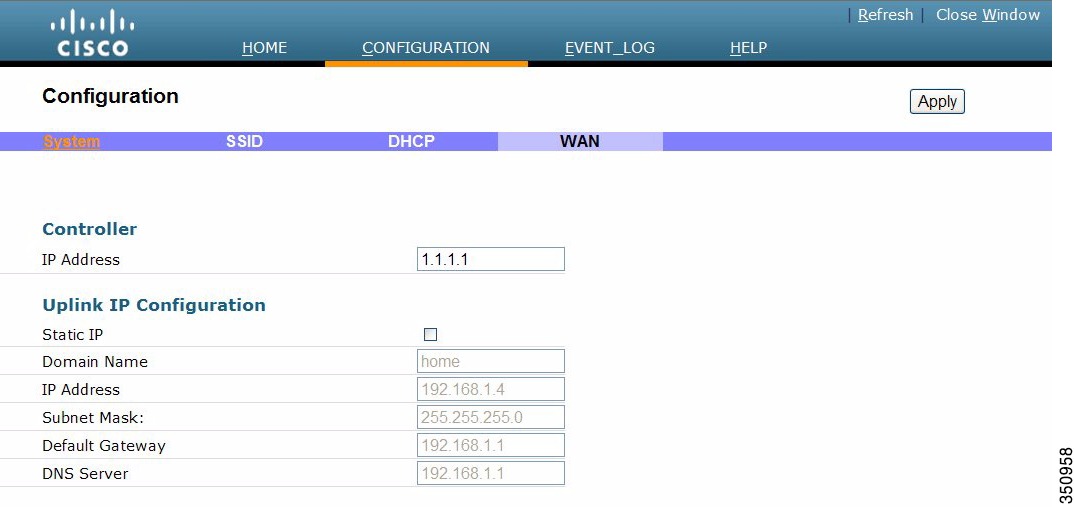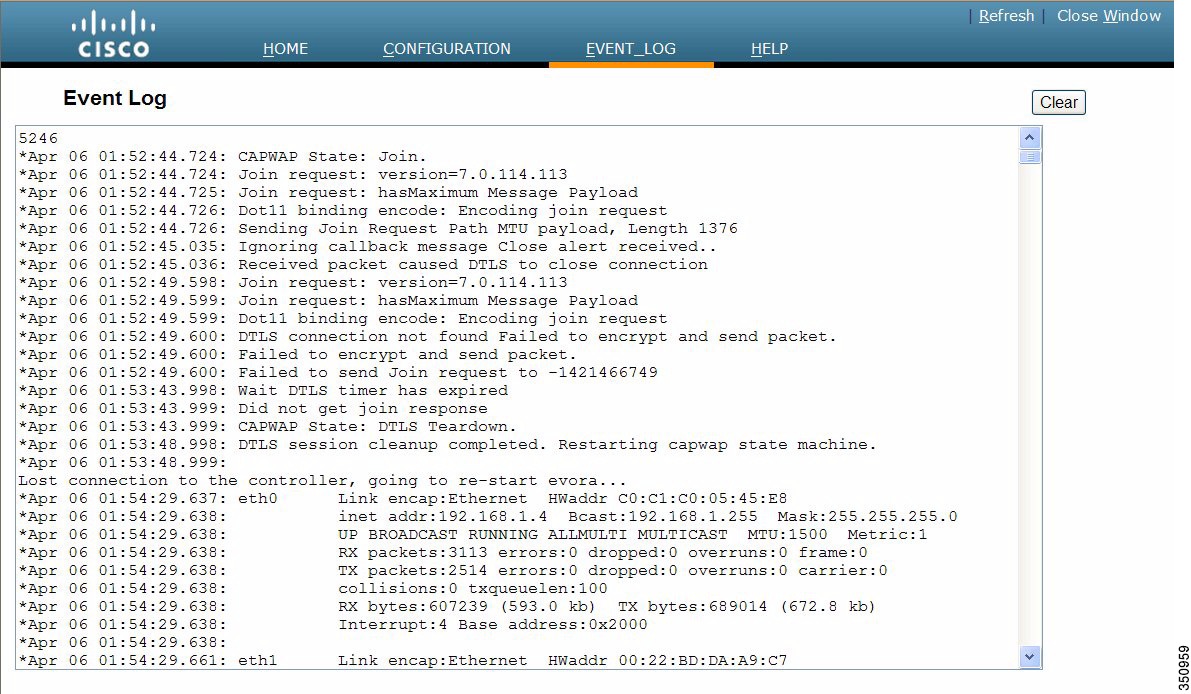

Table Of Contents
Access Point GUI
This chapter provides the following information:
Accessing the GUI
Follow these steps to access the Cisco Aironet 600 Series OfficeExtend access point GUI.
Step 1
Connect your laptop to the local Ethernet port 1, 2, or 3 on the 600 Series OfficeExtend access point.
Note
Ethernet port 4 (Remote LAN port) may not be used to configure the 600 Series OfficeExtend access point.
Step 2
With the 600 Series OfficeExtend access point connected to your home router/gateway as described in the procedure "Installing the Access Point" section, enter the IP address of the 600 Series OfficeExtend access point in the Address field of your Internet browser (http://<ap-ipaddress>) and click Go.
Note
The default IP address is 10.0.0.1.
Note
Make sure your laptop is not connected to your company's network using a virtual private network (VPN) connection.
The 600 Series Office Extend Access Point Login page is displayed.
Step 3
When prompted, enter the username and password to log into the access point.
Note
The default username and password are admin and admin.
The 600 Series OfficeExtend Access Point Welcome page is displayed.
Step 4
On the 600 Series OfficeExtend Access Point Welcome page, click Enter. The 600 Series Office Extend Access Point Home page is displayed.
Access Point GUI Overview
The GUI of the Aaccess Point has four major sections:
•
HOME—This page shows general information about the AP settings and a summary of the statistics.
•
CONFIGURATION—This page is a multi-tab page which allows the user to configure different options like personal SSID, local DHCP server, etc.
•
EVENT LOG—This page provides the user the ability to view the logged errors and ability to clear the log.
•
HELP—This displays help for the pages listed above, especially the Configuration page.
Home Page
The Home page shows the access point name, IP address, AP mode, MAC address, AP uptime, and software version.
This page also reports radio-specific information including status, frequency/channel, transmit power, number of packets in and out, and number of bytes in and out.
For each connected client, this page reports the client MAC address, elapsed association time, number of bytes in and out, number of duplicates and retries.
Configuration Page
The Configuration page has multiple tabs to allow the user to configure different options.
Wherever applicable, default values will be shown.
The main options that can be configured on this page are:
•
System
•
SSID
•
Local DHCP Server
•
Wireless Access Network (WAN)
System Tab
The Configuration System page displays general system information, such as username and password for the access point and radio interface information.
SSID Tab
The Configuration SSID page contains the fields necessary for you to configure and set up security for your personal SSIDs.
DHCP Tab
The Configuration DHCP page contains the fields necessary for you to change your DHCP scope.
WAN Tab
The Configuration WAN tab contains the fields necessary for you to configure the IP address of the Wireless LAN controller on your access point.
Event Log Page
The Event Log page displays all logged events and has a button to clear the log. The Event Log page is shown below:

 Feedback
Feedback
